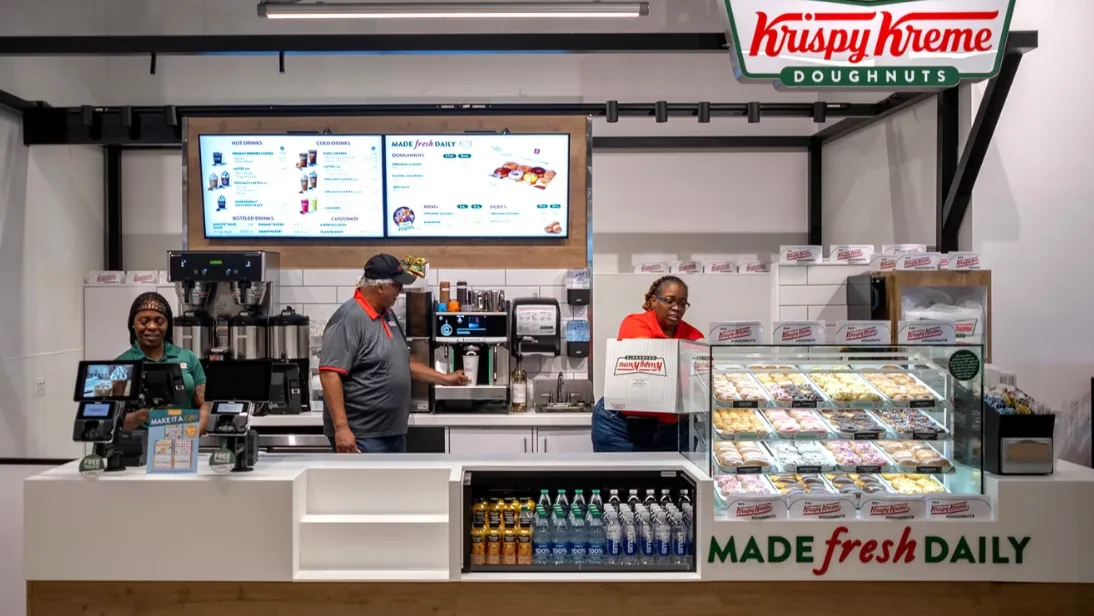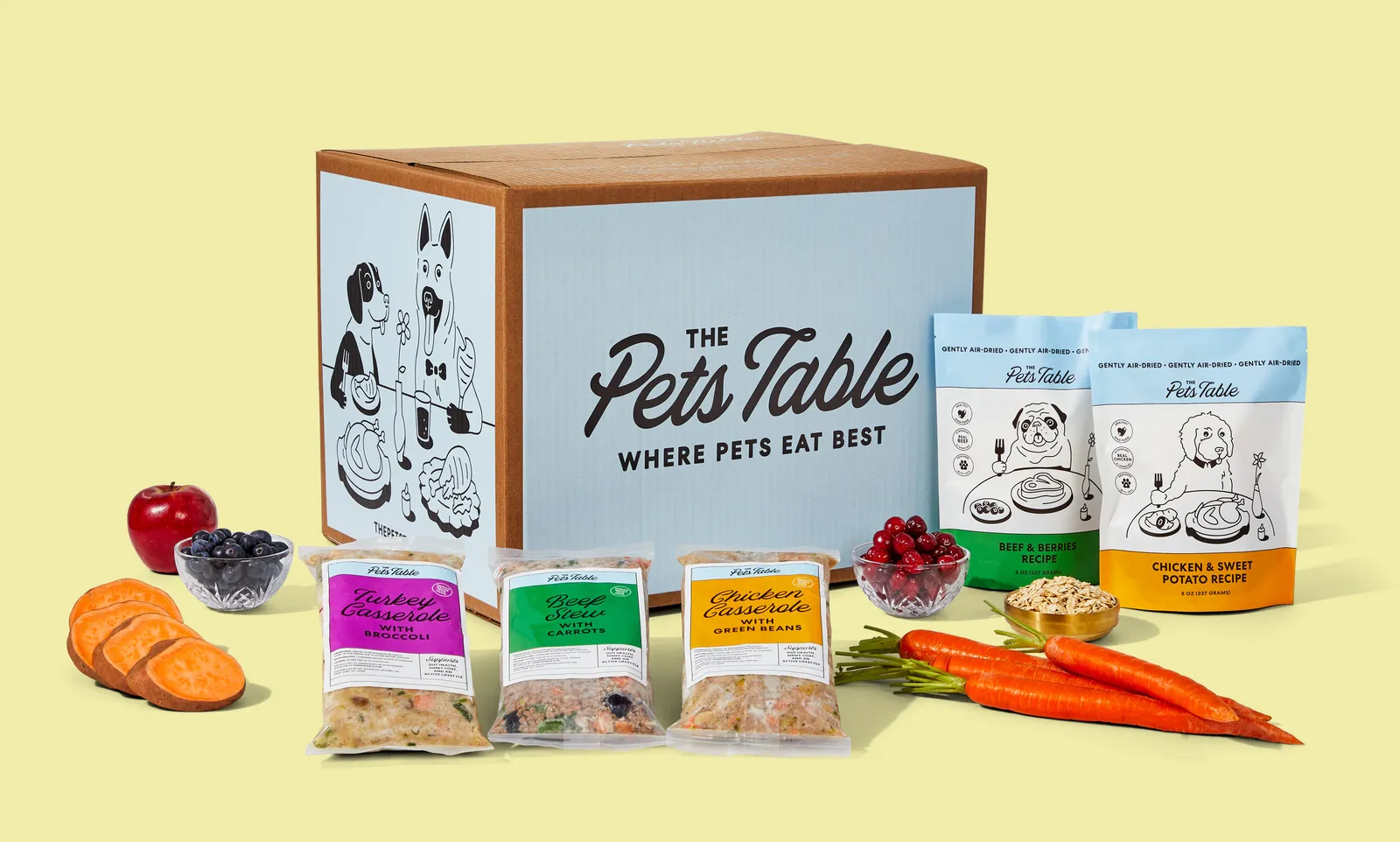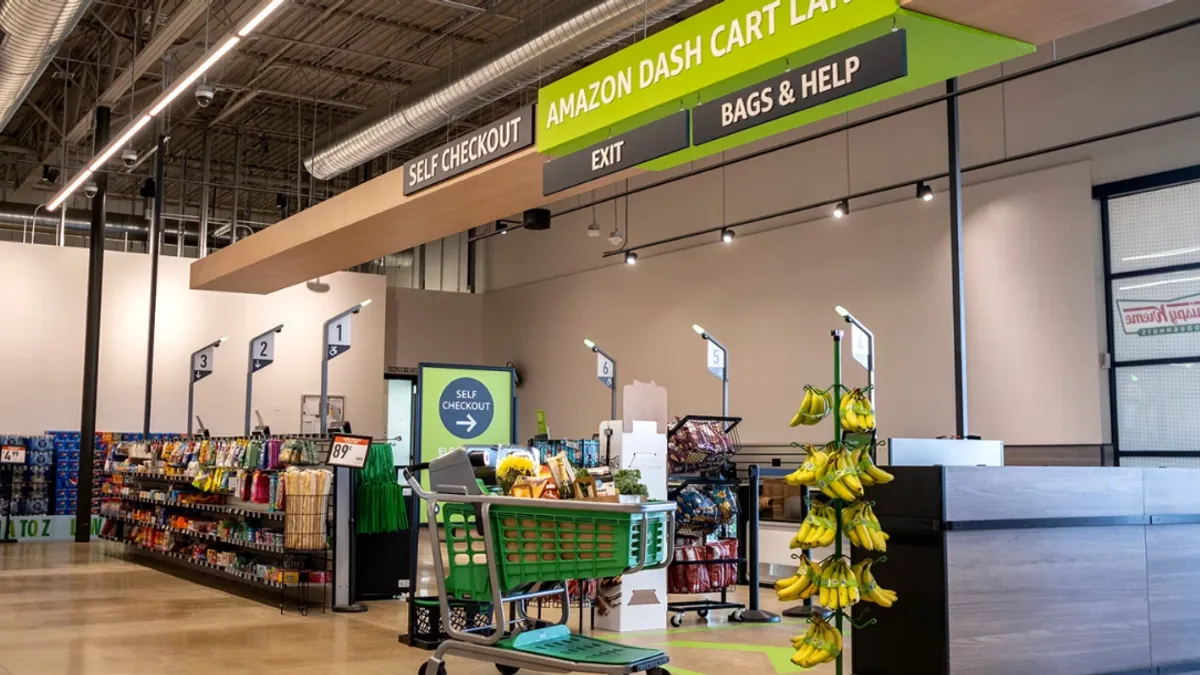The Friday Checkout is a weekly column providing more insight on the news, rounding up the announcements you may have missed and sharing what’s to come.
Although Amazon Fresh has gotten off to an underwhelming start, savvy grocery executives know better than to count the company out.
Yes, Amazon has extremely deep pockets. But more importantly, it knows how to deal with failure. The company has face planted on numerous occasions (remember the Fire Phone?). Yet it never panics. It embraces failure as an inevitable part of innovation and focuses instead on learning, iterating and keeping its eye trained on the larger prize.
That corporate ethos was on display this week when the company unveiled the eagerly anticipated Amazon Fresh 2.0 — the first major update to the grocery store brand that paused its expansion several months ago.
Currently on display at two stores near Chicago, Amazon Fresh 2.0 contains numerous features that will be familiar to any grocery operator. The produce departments have ample faux-wood paneling, warm lighting and special displays for kids. At each store, there’s dedicated merchandising islands for at-home entertaining and a Krispy Kreme shop where customers can pick up a glazed donut and an iced coffee.
Department signage is colorful and inviting, and the stores’ front ends feature a bank of self-checkout stands — the same technology that’s on display in thousands of other grocery stores across the U.S.

While these features may not seem particularly unique or exciting, they are a notable improvement over Amazon Fresh version 1.0, which focuses mainly on whizbang checkout technology and is severely lacking in merchandising acumen.
Indeed, more than three years after debuting Amazon Fresh, it appears Amazon has finally pulled up to the starting line with a serviceable supermarket. In an interview with Bloomberg, Tony Hoggett, Amazon’s senior vice president of worldwide grocery stores, said the company is updating a few more stores in Southern California and will bring the updates to more locations if shoppers like them.
Can Amazon succeed with just a serviceable supermarket? In a crowded industry, it’s important to be differentiated from the competition. But Amazon doesn’t need to reinvent grocery shopping. It already has a strong connection to millions of consumers through its powerhouse retail ecosystem and Prime membership program. And it has the ability to offer lower prices than direct competitors like Kroger and Albertsons.
So while Amazon Fresh 2.0 still isn’t all that unique from other grocery stores, it does appear to be a significant improvement to the shopping experience. A solid supermarket chain run by a company with immense resources and a proven track record of learning from failure is still a very scary prospect for the grocery industry.
In case you missed it
Instacart cuts minimum driver pay
Instacart reportedly cut its minimum base pay for drivers from $7 to $4 per order, Business Insider reported earlier this week. The change makes the gig workers more dependent on shopper tips and claiming best-paying orders.
Instacart confirmed with Business Insider that the change took effect last week. The company also mentioned the lower base pay in a July 20 blog post, noting that even with the decrease, the pay is “2x higher than the minimum of other major delivery platforms.”
HelloFresh invites pets to the table
The Pets Table, a dog food brand, is the newest addition to HelloFresh’s offerings after launching on Tuesday. The “human-grade fresh and air-dried recipes” aim to diversify the food subscription company’s portfolio. HelloFresh is now describing itself as “a fully integrated food solutions group.”

Costco sampling stations manned by no one
Shoppers have reported a change in the way the big box retailer is offering free samples. The Takeout reported that Costco, which has offered staffed sampling stations in its stores for years, has been introducing self-serve kiosk stations to hand out treats to shoppers. Costco declined to comment on The Takeout’s story.
Number of the week: 68%
That’s the percentage of households heavily engaged with loyalty programs that are likely to be influenced by social media for their online or in-store grocery purchases, according to the fourth wave of the Dunnhumby Consumer Trends Tracker released Wednesday.
That cohort and families with children at home (75%) are the two groups who reported being the most influenced by social media, per the report. Over half (53%) of the consumers surveyed in April said social media sways their buying decisions.
The findings indicate an interesting connection between loyalty members and social media usage. Heavy grocery reward users spend an average of $79 more in-store each month on groceries than customers who are not loyalty members, according to the report. Heavy grocery reward users also are more likely to come from households with children at home, be between the ages of 35 and 44 and have a household income of more than $100,000.
What’s ahead
How did they do in Q2?
Grocery Outlet will share its second-quarter results after the market closes on Tuesday, while Ahold Delhaize is set to unveil its second-quarter results on Wednesday.
Inflation figures due
How was food inflation for July? The U.S. Bureau of Labor Statistics is set to reveal Consumer Price Index data for that month on Thursday, showing whether or not food-at-home inflation has continued to decelerate.




















